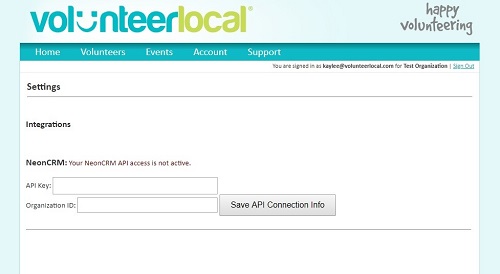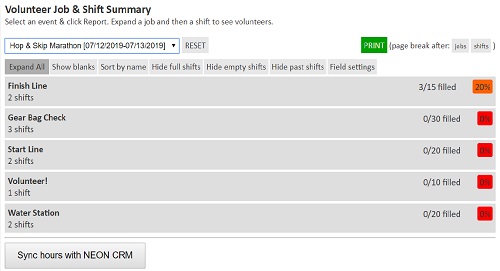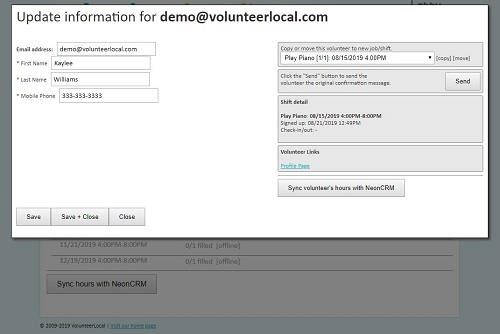Volunteers are the lifeblood of many organizations, who without the generous donation of time, would otherwise not be able to hold events or operate successfully. Keeping volunteers motivated can be challenging, even outside of a pandemic environment. Motivation differs from person to person, so applying different techniques may help you identify what works best for your group of volunteers. We have put together a list of 8 tips that you can use to help motivate volunteers.
1. Communication – goes both ways
Motivating new volunteers or returning volunteers requires good communication. Great communication will help them feel like they are knowledgeable about your organization and how they are contributing. Repeatedly sharing information about the purpose of the support work the volunteers will be helping with is a great way to create motivation. Volunteers need a sense of direction, especially if they are a new volunteer.
Listening is an equally important part of communication. Make sure to provide opportunities for volunteers to speak up with thoughts and ideas and to provide them support. Being able to listen to volunteer concerns and support them is especially important right now while we are all making compromises and working through changes.

Socialization is also a big part of volunteering and is an important motivator. Social distancing is having a great impact on this area for all of us right now. Have a space (even virtually) where volunteers can meet, communicate, socialize and motivate each other.
2. Respect – instruction and organization
Volunteers are giving up their free time to help, which should be recognized and respected. It goes without saying that respect builds trust, empathy and dedication. Communication also goes a long way to building respect. During this time, where many events are being cancelled or postponed, clearly and promptly communicating plans and details to your volunteers shows that you respect their time and feelings.
When events do take place, making sure to set up stations where workers can provide their services easily, safely and without frustration is an important part of building respect. You can do this by making sure that they know where to go, they know their shift details and that they have the necessary tools, check-lists and supplies needed to complete their shift. Respect is also shown through pairing volunteers with jobs that use their skills well. Asking simple questions on the registration form can help to ensure that you pair the right person with the right job.
3. Be available – show that you are motivated
Being accessible to your volunteers shows that you are motivated and passionate about your organization. Volunteers should have an easy time getting a hold of the right people and should feel comfortable reaching out. If they are not able to easily get questions answered, or concerns heard, they may lose interest and not show up or volunteer with your organization again.
One easy way to let volunteers know you are available is to check in with them from time to time. Right now, holding online video chats or happy hours is a fun way to keep in touch and provide a platform to keep everyone motivated.
4. Recognition – acknowledge achievements
Volunteers do not usually volunteer their time to get recognition. That does not mean that recognition is not a huge part of creating motivation. Everyone likes to be acknowledged for contributions or a job well done.
In the workplace, positive feedback is the number one motivator. This carries through for most areas of our lives. Some people do not like to be singled out and can be embarrassed by direct recognition in front of others. Praise can also be given with a team focus/team mindset. Individuals are often very responsive to team praise because they are aware of how they are affecting a whole team effort, and the part they have played in that success.
Another way to provide recognition, is to personally thank volunteers. Thank you notes and emails are one way to do this. Personalizing the thank you message to each volunteer lets them know that you are specifically acknowledging them. This may seem like a daunting task, but think how great it feels when you receive a personalized thank you. Recognition can motivate volunteers to keep volunteering for your organization, to recruit others and to continue to produce great results.
5. Rewards – extra perks!
While we know that volunteers are not volunteering their time to get a reward, rewards and perks can go a long way in attracting new volunteers and help to keep volunteers coming back. They can be a great motivator!
If you have a budget for it, sending long time volunteers or leaders to a conference or training can be a very motivating reward. Many conferences are at resorts or offer a vacation type get-away. Volunteers would get to attend interesting seminars, workshops, activities and have great networking opportunities. Attendees leave filled with motivation and ideas that will benefit your organization. Not everyone has the budget to send volunteers to conferences or to provide swag, but there are also some simple, low-cost or free things you could do.
Some successful ideas we have heard:
- Give volunteers certain hours or exclusive access to your event or vouchers for a VIP area.
- Certificates of achievement
- Buttons, pins or plaques
- Ribbons
- Outstanding volunteer rewards for each job/area
- Free food and beverage
- T-shirts
- Bandanas
- Sweat bands
- Hats
- Custom wristbands
- Reusable bags
6. Build team spirit – create a competition or challenge
Build a sense of motivation within your team by creating a space where they can get to know each other and feel more comfortable. The more team spirit created, the more comfortable the volunteers will feel. This will help them to motivate each other and look forward to future volunteer opportunities together.
You could host a gathering allowing new and returning volunteers to get to know each other or organize a competition or challenge (these can also be done virtually). One example of a challenge could be to reward current volunteers who recruit the most new volunteers. You could have different prize levels, so that multiple volunteers have a chance to win.
7. Training – motivate through knowledge
Hosting online initial and continual training opportunities can encourage development and motivation. Volunteers want to maximise the contribution they make but many receive limited training before or after they volunteer. Even a small amount of training can give volunteers a better understanding of their role, better direction within their role, help them to be more excited about their volunteering opportunity and motivate them to better themselves. We have a quick guide to training volunteers available, if you would like more detailed information.
8. Have fun – play is a great motivator
Volunteering can sometimes be stressful and cause a loss in motivation. People who feel like they are part of a group that they can have fun with will be motivated to return and spend more of their time with that group.
Important causes and goals that we are passionate about can sometimes become too serious and we forget the fun element. Before and between your events, try hosting some purely fun events. Of course, this is easier to do when we are not socially distancing, but there are some great virtual options. We have already mentioned online group chats or happy hours, but here are some additional ideas:
- Online trivia night
- Online karaoke
- Online board or other types of games
- Host a watch party with live music or movies.
- Host a live “how to” with a guest who shows how to cook or craft something.
Keeping connected is the most important step in keeping volunteers motivated. Be creative and have fun with it.







